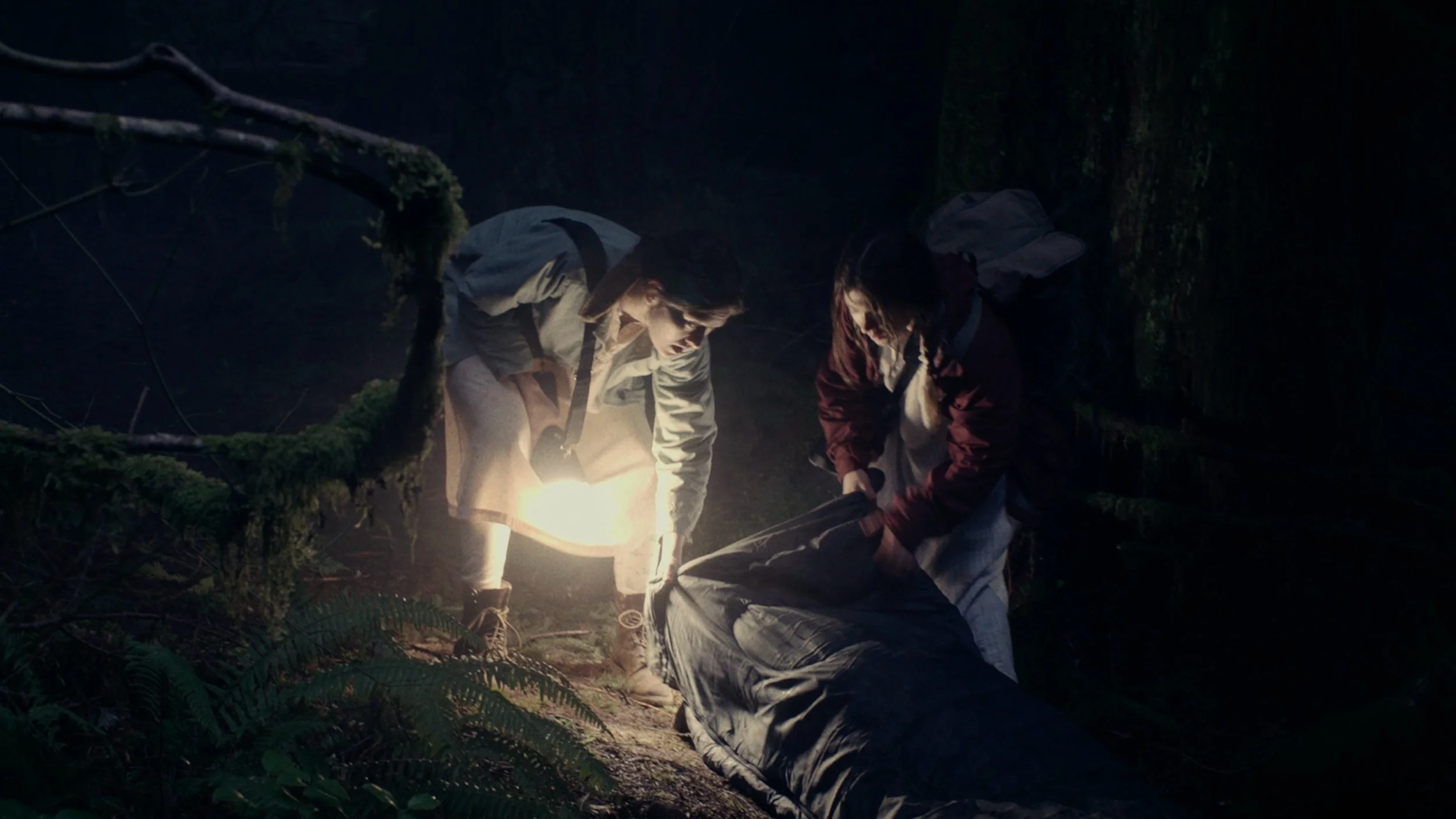Lazareth Day for Night
How will I light this? is a question that I am constantly having to answer. To the director, producers or the crew - but mostly to myself. Some scenes light themselves: the right set, the perfect time of day, a great actor, and all you have to do is show up. But others require a more involved or technical approach.
Multiple scenes in the movie “Lazareth” take place in the woods at night, a scenario that comes with a few challenges attached. What is my lighting motivation? What is the tone? And how can we accomplish it with the limited time and resources available? How will I light this?
The movie tells the story of Maeve and Imogen, two sisters raised in an isolated cabin by their Aunt Lee. Equipped with flashlights, they brave into the woods that surround the cabin and protect them from a violent world outside that they have never seen. Director Alec Tibaldi wanted the woods to feel as if they were out of a dark fable, a place that is imbued with just a bit of magic realism. They are the barrier that separates the sisters from danger - a wall that they consider their safety, but later come to discover is also their prison. For that reason, it was important to photograph the woods as much as the characters, and make sure the environment was present at all times, reflecting both of those ideals in different parts of the movie. This was crucial to create a sense of mystery for the characters and the audience.
Shooting in the woods at night means you’re starting from scratch. There isn’t any “available” light to build from, so everything needs to be brought in. That requires time, equipment and an adequate workforce. Any given shot might see hundreds of yards into the distance, creating large swaths of space to light. Otherwise you risk ending with lit characters in the foreground, floating against a black background, which wasn’t the desired effect. On top of that, you need to light not just what’s in front of the camera, but also the working environment, which only adds to the complexity of the work. Given our 17 day shoot, time was of the essence.
The remote location (about 1 hour drive for most crew members) wasn’t conducive to long work nights either. Those can lead to fatigue, low morale and even accidents, especially when you’re in the middle of a forest, during a muddy, wet winter.
Day for Night, an old hollywood technique where you’d shoot night scenes during the day seemed like a possible solution to all these problems (curiously called “American Night” in my native Portuguese language). Movies like Ad Astra, Nope, or Mad Max: Fury Road, brilliantly photographed by Hoyte Van Hoytema and John Seale, have really pushed the Day for Night effect into the 21st century, utilizing 3D camera rigs, infrared cameras or bold color correction and sky replacement techniques. But could we achieve a similarly pleasing effect without most of those tools? A technically proficient night look that is expressive and creative, hitting the right tone for the movie, making it feel bigger, dramatic and believable? And all of this in-camera, without requiring Visual Effects?
AD ASTRA, cinematography by Hoyte Van Hoytema
NOPE, cinematography by Hoyte Van Hoytema
MAD MAX FURY ROAD, cinematography by John Seale



















